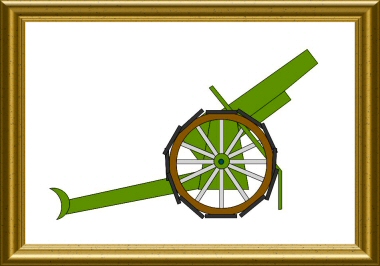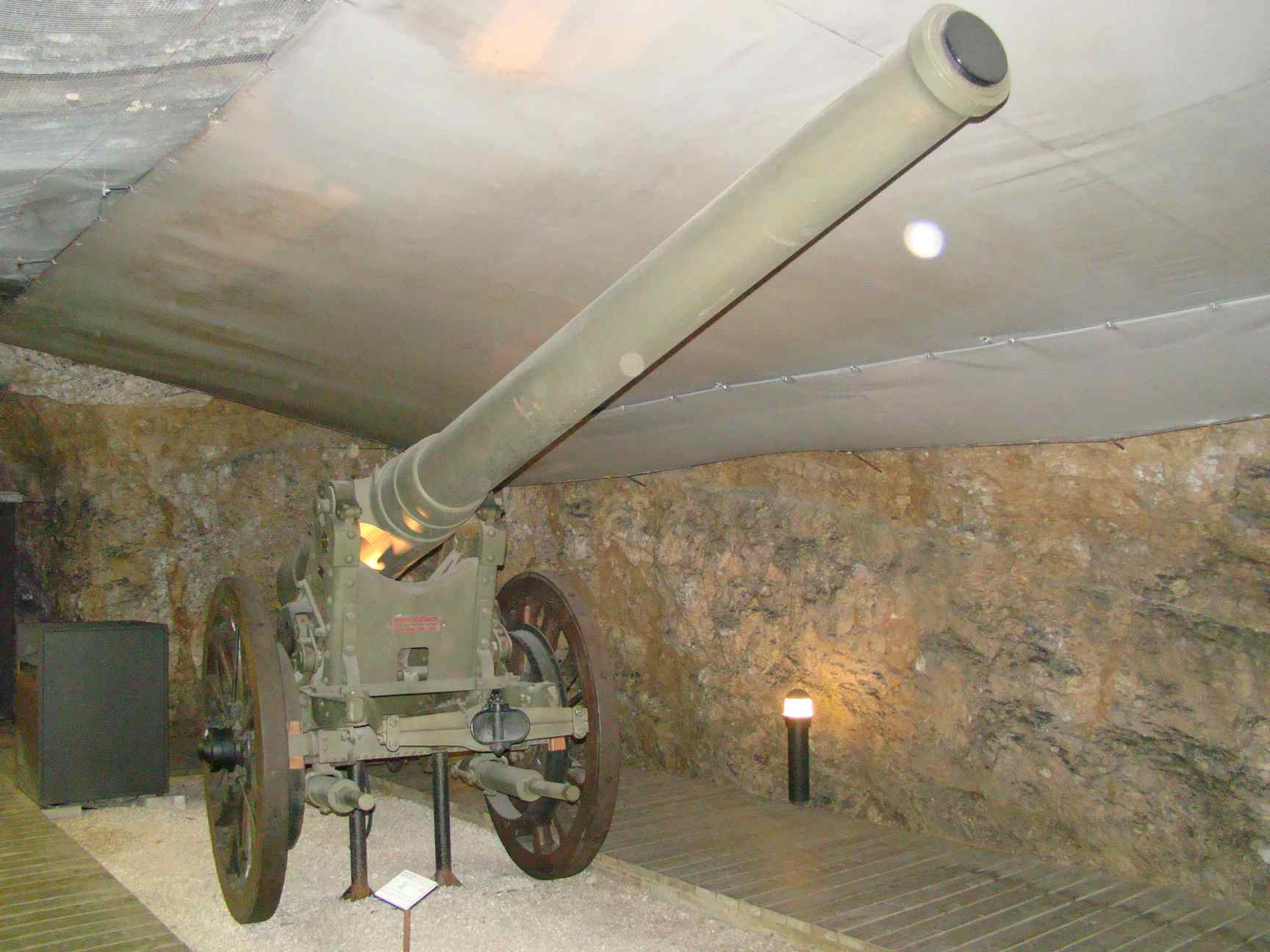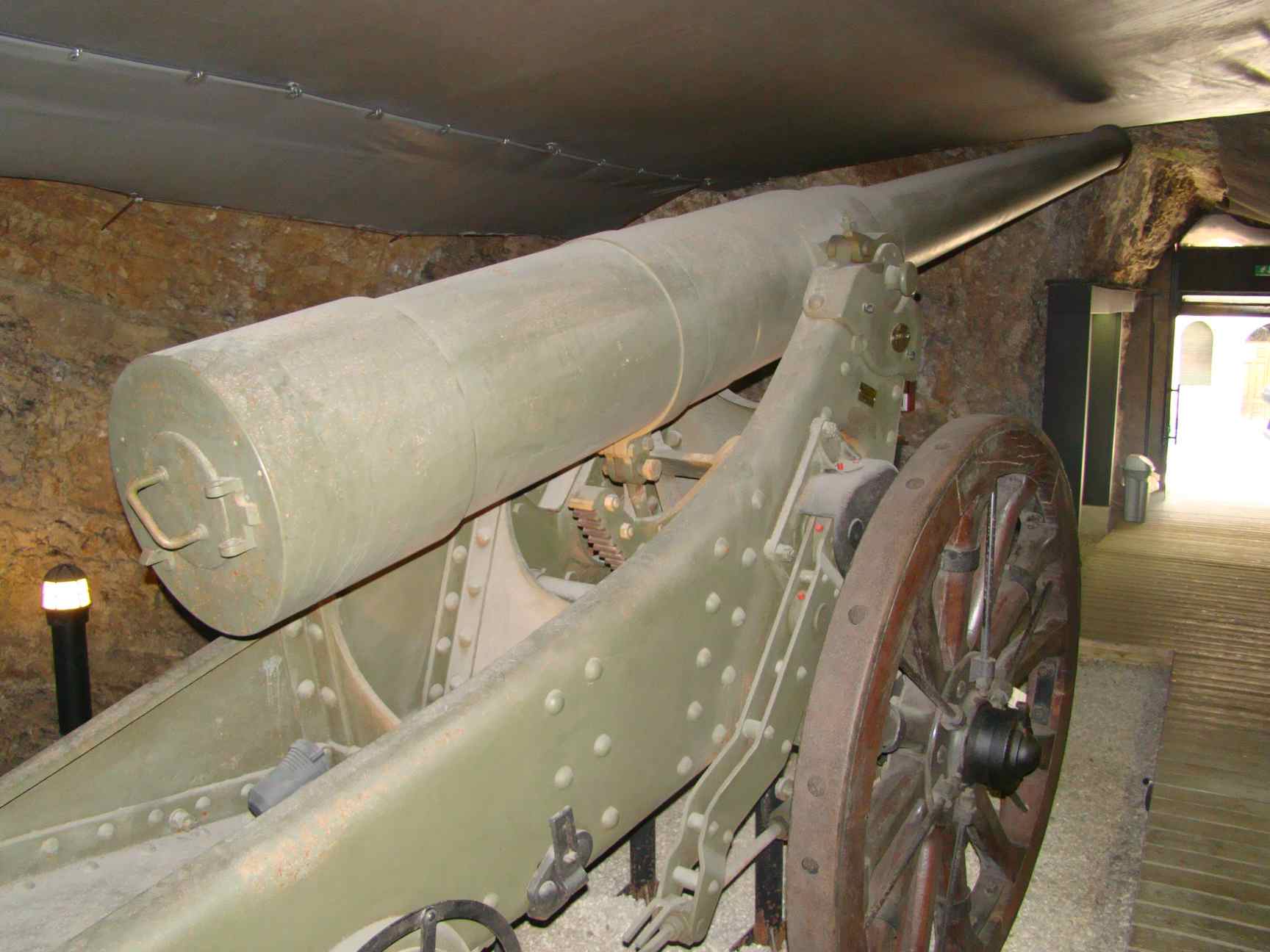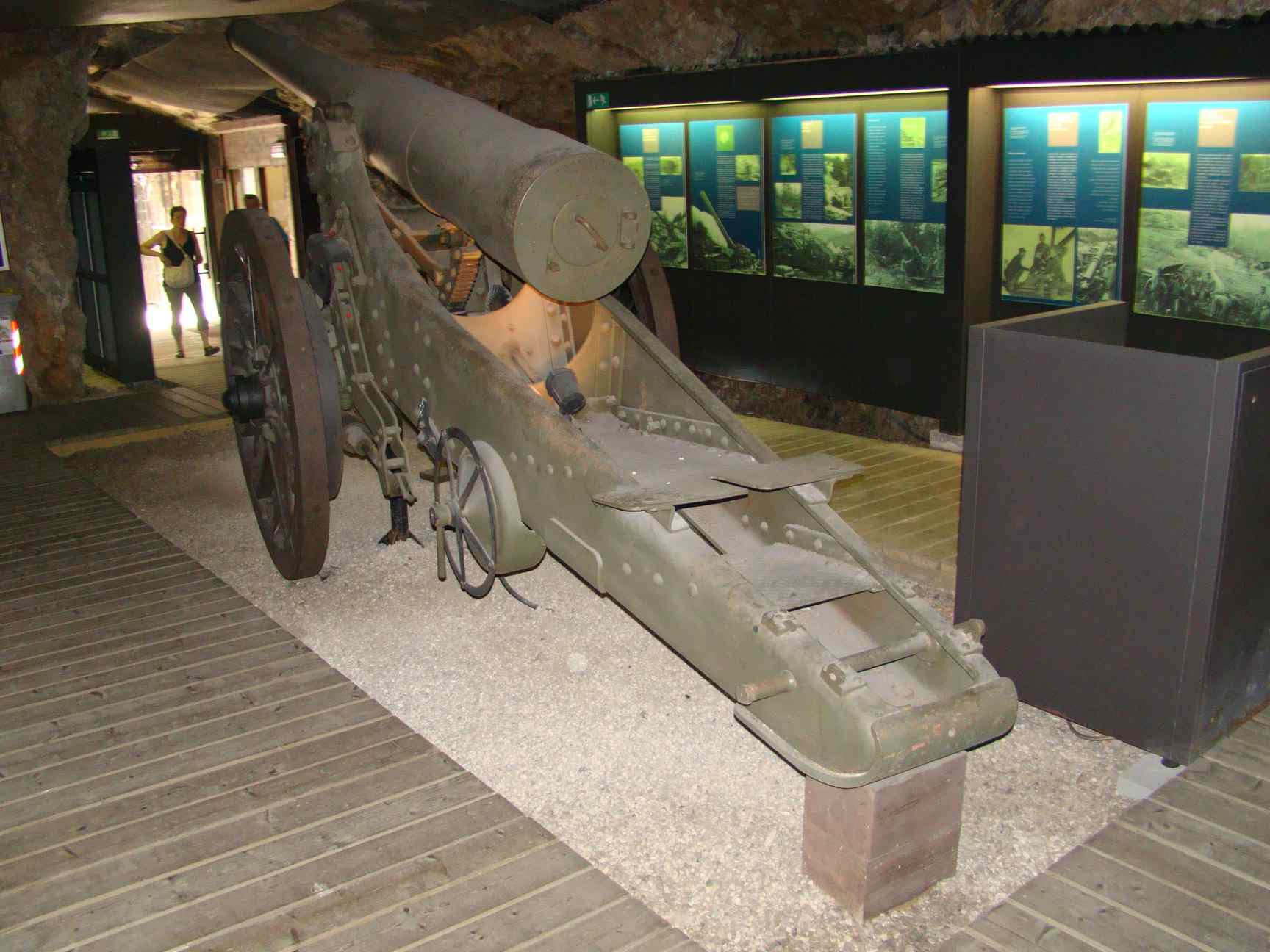|
|
|
|
|
|
|
 Italy
|
Cannone da 149 A (149/35) |
 Heavy artillery
|
|
|
Contributor :
|
Location :
Italy
Rovereto
Museo Storico Italiano della Guerra
Coordinates :
Lat : 45.88690 / Long : 11.04640
|
General comments on this surviving gun :
Identical items in the same location :
1
Items covered by this file :
1
|
|

|

|

|
This big gun with a long 35 calibres tube is exposed in the cave museum of the Artillery section of the Rovereto museum
|
Rear view on the breech. Markings : 'Gio Ansaldo & Co - Cannone da 149 A - Genova 1918 - Mla 12495'
|
Rear view on the carriage. Markings : 'Officine Mecchanicce - 1917 MILANO 1917 - M149/35 - Affusto Nr 12495'
|
|
|
Historic and technical information
|
|
Denomination :
149A (149/35)
|
Origin :
 (
O.T.O. / Vickers Terni)
(
O.T.O. / Vickers Terni)
 (
Ansaldo )
(
Ansaldo )
 (
Arsenale di Torino )
(
Arsenale di Torino )
|
|
Historic context :
The works for the design of a heavy artillery gun meant to replace the old cannone da 149G started as early as 1890. In 1900, the Vickers Terni factories (managed by Sir William Armstrong) proposed their solution with one of their very first designs : the cannone da 15AL/36 (AL/36 for acciaio - steel, long 36 calibres), later named cannone da 149A.
This gun was adopted by the Italian army in 1901 (justifying its other usual name 'Cannone da 149/35A M1901'), and was produced by numerous plants. The first deliveries were made in 1905..
The ballistic properties of this gun's barrel were brilliant with its nice 35 calibres length, allowing a maximum range of 12 km (and even up to 14km according to some sources). Unhopefully, its carriage design did not integrate the latest technological revolutions of the artillery taking place in Europe at this moment, since the static carriage of this gun was not equipped with any kind of modern recoil recuperation system. The only way to get this gun approximately returning on its position after firing was the use of wooden wedges placed behind the wheels, and wheel belts. This had a direct effect on the fire rate that was also handicapped by the poorly efficient interrupted screw breech that had to be operated in 3 movements.
In 1911 Italy asked several industrials including Krupp and Schneider to propose an way to provide this gun a recoil recuperation system. Krupp won the contest but the project was cancelled in 1915 after the war declaration between Italy and Germany. Therefore, the 149A guns kept their 19th century old fashioned look throughout the WW1 and until their disappearing in 1943 when WW2 finished for Italy.
When Italy entred the war in May 1915, its siege artillery (158 weapons of all ages and various calibres) only had 12 batteries (48 guns) of 149A. There were 86 such guns in December 1916, but the numbers rapidly climbed to 404 guns in October 1917. Alas, at the end of this month the Caporetto Disaster caused the loss of 197 such 149A guns ! A remarkable industrial effort bring back the numbers to 510 in June 1918, and 623 at the armistice in November 1918. When entering WWA l'entrée dans la seconde guerre mondiale en juin 1940, les armées fascistes du Duce, the Duce's fascist armies had 895 guns of 149/35 in their artillery units.
|
Technical data :
- Complete description : 149 mm heavy gun A - 149 / 35 calibres
- Design year : 1905
- Calibre : 149.10 mm
- Weight in firing position : 6630 kg (7820 kg with the Krupp modified carriage)
- Weight for transportation : (can be disassembled in separate parts for mountain transportation)
- Tube length in calibres : 35.00 (rifled part) - 36.6 calibres total length
- Grooves : 48 constant angle, to the left
- Projectile weight : 29.7 kg à 43.3 kg
- Initial speed : 635 m/s to 700 m/s
- Fire rate : 1 shot / minute
- Range : 12000 m to 14200 m (17600 m just before WW2)
- Elevation range : -10 to +35 degrees
- Direction range : none
|
Sources
|
|
|
|